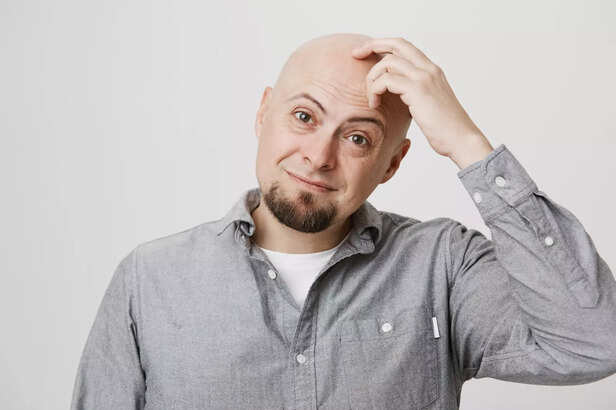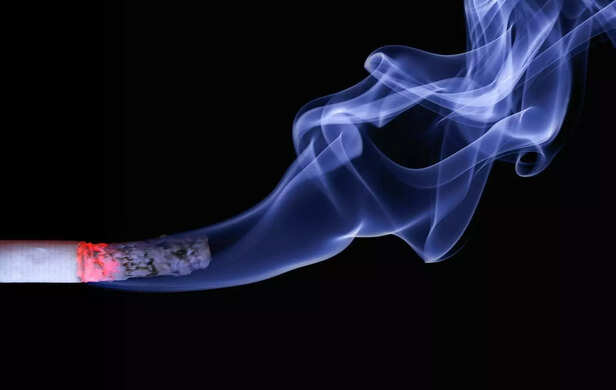Balding Before 30? These Hidden Factors Indian Men Should Know
Riya Kumari | Jun 11, 2025, 22:51 IST
( Image credit : Times Life Bureau )
Let’s talk about the sneaky little heartbreak that is early male pattern baldness. It creeps up like a bad haircut—subtle at first, then suddenly irreversible. And if you’ve ever been personally victimized by thinning temples or that suspicious widening part at the crown, buckle up. We’re going on a hair-raising ride (pun fully intended).
Let’s be honest: seeing more hair on your pillow than on your scalp can feel like a betrayal. Especially when it happens in your 20s or 30s—just when you're figuring out skincare, someone hits delete on your hairline. So what gives? Let’s break down the science of balding, minus the fluff, and look at what you can actually do about it.
The Real Reason Men Go Bald Early: DHT

The villain here is a hormone called Dihydrotestosterone (DHT). It’s a byproduct of testosterone (yes, the same hormone that makes you “manly”). But too much DHT shrinks your hair follicles, especially on the scalp. Smaller follicles = thinner hair = bald spots.
Scientific term: This process is called androgenetic alopecia, aka male pattern baldness.
Important note: It’s not about having too much testosterone—it’s about how sensitive your follicles are to DHT. That part is genetic.
Is Baldness in Your Genes?

Yes—your genes decide how sensitive your follicles are to DHT. And no, it’s not just from your mom’s side. That’s a myth. You can inherit the gene from either parent. So if your dad, uncle, or grandpa started balding early… odds are, you might too.
Why Does It Happen So Early?

Male pattern baldness can begin as early as late teens to early 20s. That’s because:
What You Can Do: Science-Backed Solutions

Let’s separate hope from hype. Here’s what actually works, based on medical research.
1. Minoxidil (Rogaine)
2. Finasteride (Propecia)
3. Low-Level Laser Therapy (LLLT)
What Doesn’t Work (Much)

Bonus: Lifestyle Habits That Help

While they won’t reverse genetic baldness, these habits support overall hair health:
Bottom Line: Can You Stop Hair Loss?
Yes—you can slow it, sometimes regrow it, and definitely manage it. But it starts with understanding what’s causing it (DHT), checking with a dermatologist, and choosing evidence-based treatments. No oil or ad promising “overnight results” is going to beat the biology of your scalp.
Balding isn’t a personal failure. It’s a mix of hormones, genetics, and biology. What is in your hands is how you respond—with knowledge, confidence, and maybe, a good dermatologist on speed dial.
The Real Reason Men Go Bald Early: DHT

Bald man
( Image credit : Freepik )
The villain here is a hormone called Dihydrotestosterone (DHT). It’s a byproduct of testosterone (yes, the same hormone that makes you “manly”). But too much DHT shrinks your hair follicles, especially on the scalp. Smaller follicles = thinner hair = bald spots.
Scientific term: This process is called androgenetic alopecia, aka male pattern baldness.
Important note: It’s not about having too much testosterone—it’s about how sensitive your follicles are to DHT. That part is genetic.
Is Baldness in Your Genes?

Genes
( Image credit : Pexels )
Yes—your genes decide how sensitive your follicles are to DHT. And no, it’s not just from your mom’s side. That’s a myth. You can inherit the gene from either parent. So if your dad, uncle, or grandpa started balding early… odds are, you might too.
Why Does It Happen So Early?

Smoking
( Image credit : Pexels )
Male pattern baldness can begin as early as late teens to early 20s. That’s because:
- Testosterone levels are high during puberty and early adulthood.
- If your follicles are DHT-sensitive, they’ll start reacting early.
- Lifestyle habits (stress, poor nutrition, smoking) can make things worse.
What You Can Do: Science-Backed Solutions

Lab
( Image credit : Pexels )
Let’s separate hope from hype. Here’s what actually works, based on medical research.
1. Minoxidil (Rogaine)
- What it is: A topical treatment you apply on your scalp.
- How it works: Increases blood flow to hair follicles, extending the growth phase.
- Works best for: Crown thinning, not full bald spots.
- Science says: It’s FDA-approved and effective for many, but takes consistent use (4–6 months to see results).
2. Finasteride (Propecia)
- What it is: An oral pill that blocks the enzyme converting testosterone to DHT.
- How it works: Reduces DHT levels, slowing hair loss and regrowing some hair.
- Science says: One of the most effective treatments. FDA-approved.
- Warning: May have side effects like low libido in some men. Always consult a doctor.
3. Low-Level Laser Therapy (LLLT)
- What it is: Laser caps or combs that emit red light.
- How it works: Stimulates hair follicles and improves cell metabolism.
- Science says: Results vary but some clinical studies show benefits when used consistently.
4. Hair Transplant Surgery
- What it is: Taking hair from one part of your scalp and implanting it into bald areas.
- Success rate: High, if done by a skilled surgeon.
- Drawback: Expensive and may need multiple sessions.
What Doesn’t Work (Much)

Onion
( Image credit : Pexels )
- Onion juice – Antibacterial? Sure. Hair growth miracle? Nope.
- Essential oils (rosemary, peppermint) – Mild stimulation at best.
- Biotin supplements – Only help if you're actually deficient (rare).
- Shampoos labeled “anti-hair fall” – Most don’t address the root cause: DHT.
Bonus: Lifestyle Habits That Help

Exercise
( Image credit : Pexels )
While they won’t reverse genetic baldness, these habits support overall hair health:
- Eat protein & iron-rich foods (eggs, fish, nuts, spinach
- Avoid crash diets – Sudden weight loss = hair shedding
- Sleep enough – Hair follicles are mini-organs that rest too
- Reduce stress – Chronic stress can push hair into shedding phase (telogen effluvium)
- Quit smoking – It reduces blood flow to the scalp
Bottom Line: Can You Stop Hair Loss?
Balding isn’t a personal failure. It’s a mix of hormones, genetics, and biology. What is in your hands is how you respond—with knowledge, confidence, and maybe, a good dermatologist on speed dial.
